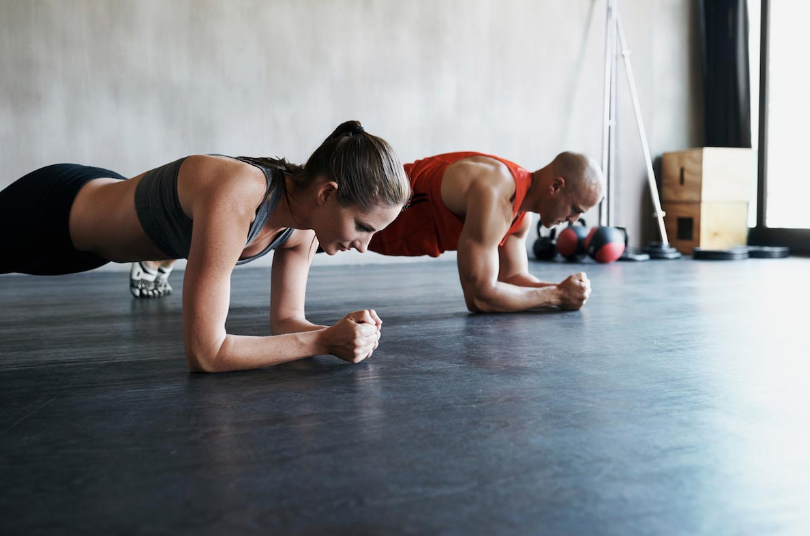24 Best Stretching Exercises for Better Flexibility
24 Best Stretching Exercises for Better Flexibility
Stretching is an essential aspect of any fitness routine. It not only enhances flexibility but also plays a crucial role in preventing injuries and improving performance. Incorporating stretching exercises into your daily workout regimen can lead to significant benefits for your overall fitness. In this article, I will share with you the 24 best stretching exercises that can help you achieve better flexibility and optimize your fitness goals.
Importance of Stretching for Flexibility
Flexibility is a key component of physical fitness and plays a vital role in maintaining a healthy and functional body. Regular stretching exercises can improve your range of motion, allowing you to move more freely and with ease. It helps to lengthen the muscles and tendons, preventing them from becoming tight and stiff.
Additionally, stretching increases blood flow to the muscles, which aids in the delivery of nutrients and oxygen, promoting muscle recovery and reducing muscle soreness. It also improves posture, balance, and coordination, making your movements more efficient and reducing the risk of falls and injuries.
Benefits of Stretching Exercises
Stretching exercises offer a wide range of benefits for both the body and mind. Apart from improving flexibility, here are some other advantages of incorporating stretching into your fitness routine:
1. Enhanced Performance: By increasing flexibility, stretching allows your muscles to move through a greater range of motion, enhancing your performance in various physical activities such as sports, dance, and martial arts.
2. Injury Prevention: Tight muscles are more prone to injuries. Regular stretching helps to keep your muscles and tendons flexible, reducing the risk of strains, sprains, and other muscle-related injuries.
3. Stress Relief: Stretching exercises not only relax your body but also calm your mind. They promote the release of endorphins, which are natural mood boosters, helping to reduce stress and anxiety.
4. Improved Posture: Stretching the muscles in your chest, shoulders, and back can help counteract the effects of prolonged sitting and poor posture. It lengthens the tight muscles and strengthens the weak ones, promoting proper alignment and reducing back and neck pain.
5. Increased Energy Levels: Stretching increases blood circulation and stimulates the nervous system, resulting in improved energy levels and mental alertness.
Types of Stretching Exercises
There are different types of stretching exercises, each with its own benefits and purposes. Here are the main types of stretching:
1. Static Stretching: Static stretching involves holding a stretch for a specific period without any movement. It is commonly used for cooling down after a workout and improving overall flexibility.
2. Dynamic Stretching: Dynamic stretching involves moving the muscles and joints through a full range of motion. It is typically done as part of a warm-up routine before engaging in physical activity.
3. Proprioceptive Neuromuscular Facilitation (PNF): PNF stretching combines static stretching and muscle contraction. It involves holding a stretch, then contracting the muscle being stretched, and finally relaxing into a deeper stretch. PNF stretching is often used for increasing flexibility.
4. Passive Stretching: Passive stretching involves using an external force, such as a partner, gravity, or a prop, to apply pressure and stretch the muscles.
5. Active Stretching: Active stretching involves using the opposing muscles to stretch a target muscle. It does not require any external force or assistance.
Each type of stretching has its own benefits and is suitable for different situations. It is important to choose the right type of stretching exercise based on your needs and goals.
How to Properly Stretch
To ensure that you get the most out of your stretching exercises and minimize the risk of injury, it is crucial to follow proper stretching techniques. Here are some guidelines to help you stretch safely and effectively:
1. Warm Up: Before stretching, it is important to warm up your muscles with a few minutes of light aerobic exercise, such as jogging or jumping jacks. This increases blood flow to the muscles and prepares them for stretching.
2. Start Slowly: Begin each stretch slowly and gently, gradually increasing the intensity as your muscles loosen up. Avoid bouncing or jerking movements, as they can cause muscle strain.
3. Focus on Breathing: Breathe deeply and rhythmically throughout each stretch. Inhale slowly as you prepare for the stretch, and exhale as you ease into the stretch. This helps to relax your muscles and allows for a deeper stretch.
4. Hold the Stretch: Hold each stretch for 15 to 30 seconds, or longer if it feels comfortable. Avoid holding your breath and try to relax into the stretch with each exhale.
5. Don't Push Through Pain: Stretching should not be painful. If you feel any sharp or intense pain, ease off the stretch immediately. Stretch only to the point of mild discomfort, and never force a stretch beyond your comfort zone.
By following these guidelines, you can ensure that your stretching exercises are safe, effective, and enjoyable.
Precautions and Safety Tips for Stretching
While stretching is generally safe for most people, there are some precautions and safety tips to keep in mind to minimize the risk of injury:
1. Avoid Stretching Cold Muscles: Stretching cold muscles can increase the risk of muscle strains and tears. Always warm up your muscles before stretching by engaging in light aerobic activity.
2. Be Mindful of Existing Injuries: If you have any existing injuries or medical conditions, consult with a healthcare professional before starting a stretching routine. They can provide you with guidance on which stretches are safe and beneficial for your specific condition.
3. Don't Overstretch: It is important to stretch within your range of motion and avoid overstretching. Overstretching can lead to muscle and tendon injuries.
4. Progress Gradually: Gradually increase the duration and intensity of your stretches over time. Rushing into deep stretches without proper preparation can cause muscle strains.
5. Listen to Your Body: Pay attention to how your body feels during each stretch. If a stretch causes pain or discomfort, modify or discontinue the stretch. Everyone's body is different, so it's important to listen to your own body's signals.
By taking these precautions and following safety tips, you can make stretching a safe and beneficial part of your fitness routine.
Stretching Routines for Different Muscle Groups
Now that we understand the importance of stretching, the benefits it offers, and how to stretch safely, let's explore stretching routines for different muscle groups. These routines will target specific areas of the body, helping you to improve flexibility and prevent muscle imbalances.
Upper Body Stretching Exercises
1. Neck Stretch: Stand or sit with good posture. Gently tilt your head to one side, bringing your ear towards your shoulder. Hold for 15-30 seconds and repeat on the other side.
2. Shoulder Stretch: Extend one arm across your chest and gently pull it towards your body with the opposite arm. Hold for 15-30 seconds and repeat on the other side.
3. Chest Stretch: Stand facing a wall or doorway. Place your forearm on the wall or doorway at shoulder height. Slowly rotate your body away from the wall until you feel a stretch in your chest. Hold for 15-30 seconds and repeat on the other side.
Lower Body Stretching Exercises
1. Hamstring Stretch: Sit on the floor with one leg extended in front of you and the other leg bent. Reach towards your toes on the extended leg, feeling a stretch in the back of your thigh. Hold for 15-30 seconds and repeat on the other side.
2. Quadriceps Stretch: Stand tall and grab your ankle with your hand, pulling your heel towards your glutes. Keep your knees close together and feel the stretch in the front of your thigh. Hold for 15-30 seconds and repeat on the other side.
3. Calf Stretch: Stand facing a wall with one foot in front of the other. Lean forward, placing your hands on the wall, and keep your back leg straight while bending the front knee. Feel the stretch in your calf muscle. Hold for 15-30 seconds and repeat on the other side.
Stretching Exercises for Athletes
Athletes require flexibility to excel in their respective sports. Here are some stretching exercises that can benefit athletes:
1. Hip Flexor Stretch: Kneel on one knee with the other foot in front of you, creating a 90-degree angle with your knee. Push your hips forward until you feel a stretch in the front of your hip. Hold for 15-30 seconds and repeat on the other side.
2. IT Band Stretch: Stand with your feet shoulder-width apart. Cross one leg behind the other and lean to the side, feeling a stretch along the outer side of your leg. Hold for 15-30 seconds and repeat on the other side.
3. Groin Stretch: Sit on the floor with the soles of your feet together and your knees out to the sides. Gently press your knees towards the floor until you feel a stretch in your groin. Hold for 15-30 seconds.
Stretcing Exercises for Office Workers
Sitting for long hours at a desk can lead to muscle tightness and postural imbalances. These stretching exercises can help counteract the effects of prolonged sitting:
1. Upper Back Stretch: Sit tall and interlace your fingers in front of you, palms facing away. Round your upper back, pushing your hands away from your body. Hold for 15-30 seconds.
2. Wrist Stretch: Extend one arm in front of you with the palm facing up. Use your other hand to gently pull your fingers back towards your body until you feel a stretch in your wrist and forearm. Hold for 15-30 seconds and repeat on the other side.
3. Hip Flexor Stretch: Sit on the edge of your chair with one ankle crossed over the opposite knee. Gently press down on the crossed knee until you feel a stretch in your hip. Hold for 15-30 seconds and repeat on the other side.
Stretching Exercises for Seniors
Maintaining flexibility is especially important for seniors to maintain mobility and prevent falls. These stretching exercises are suitable for older adults:
1. Ankle Circles: Sit on a chair and lift one foot off the ground. Rotate your ankle in a circular motion, first in one direction and then in the other. Repeat with the other foot.
2. Seated Forward Bend: Sit on the edge of a chair with your feet flat on the floor. Slowly bend forward from your hips, reaching towards your toes. Hold for 15-30 seconds.
3. Seated Leg Raise: Sit on a chair with your feet flat on the floor. Lift one leg off the ground, extending it straight in front of you. Hold for a few seconds and then lower it back down. Repeat with the other leg.
Stretching Exercises for Runners
Runners often experience tightness in their lower body. These stretching exercises can help improve flexibility and prevent running-related injuries:
1. Glute Stretch: Lie on your back with both knees bent. Cross one ankle over the opposite knee and gently pull the crossed leg towards your chest until you feel a stretch in your glutes. Hold for 15-30 seconds and repeat on the other side.
2. Hip Flexor Stretch: Kneel on one knee with the other foot in front of you, creating a 90-degree angle with your knee. Push your hips forward until you feel a stretch in the front of your hip. Hold for 15-30 seconds and repeat on the other side.
3. Calf Stretch: Stand facing a wall with one foot in front of the other. Lean forward, placing your hands on the wall, and keep your back leg straight while bending the front knee. Feel the stretch in your calf muscle. Hold for 15-30 seconds and repeat on the other side.
Stretching Exercises for Dancers
Flexibility is crucial for dancers to perform various movements and routines. These stretching exercises can help dancers improve their range of motion:
1. Split Stretch: Sit on the floor with your legs extended in a V shape. Slowly lower your upper body towards the floor, reaching towards your toes. Hold for 15-30 seconds.
2. Standing Forward Bend: Stand tall with your feet hip-width apart. Slowly bend forward from your hips, reaching towards the floor. Allow your upper body to hang loose and relax. Hold for 15-30 seconds.
3. Side Split Stretch: Stand with your feet wider than shoulder-width apart. Slowly lower your body towards the side, reaching towards the floor. Hold for 15-30 seconds and repeat on the other side.
Stretching Exercises for Martial Artists
Martial artists require flexibility and agility for their training and techniques. Here are some stretching exercises that can benefit martial artists:
1. Side Kick Stretch: Stand tall with your feet hip-width apart. Lift one leg to the side, keeping it straight, and slowly kick it up as high as you can. Hold for a few seconds and then lower it back down. Repeat with the other leg.
2. Front Split Stretch: Sit on the floor with your legs extended in a V shape. Slowly slide one leg forward, extending it straight in front of you. Hold for 15-30 seconds and repeat with the other leg.
3. Butterfly Stretch: Sit on the floor with the soles of your feet together and your knees out to the sides. Gently press your knees towards the floor until you feel a stretch in your groin. Hold for 15-30 seconds.
Stretching Exercises for Yoga Practitioners
Flexibility is a fundamental aspect of yoga practice. These stretching exercises can help yoga practitioners deepen their poses and improve their overall flexibility:
1. Downward Dog Stretch: Start on your hands and knees, then lift your hips up and back, forming an upside-down V shape with your body. Press your heels towards the ground and relax your head and neck. Hold for 15-30 seconds.
2. Pigeon Pose: Start in a push-up position, then bring one knee forward towards your hands, placing it on the ground. Slide the other leg back behind you, keeping it straight. Sink your hips towards the ground and feel a stretch in your hip and glutes. Hold for 15-30 seconds and repeat on the other side.
3. Seated Forward Bend: Sit on the floor with your legs extended in front of you. Slowly bend





